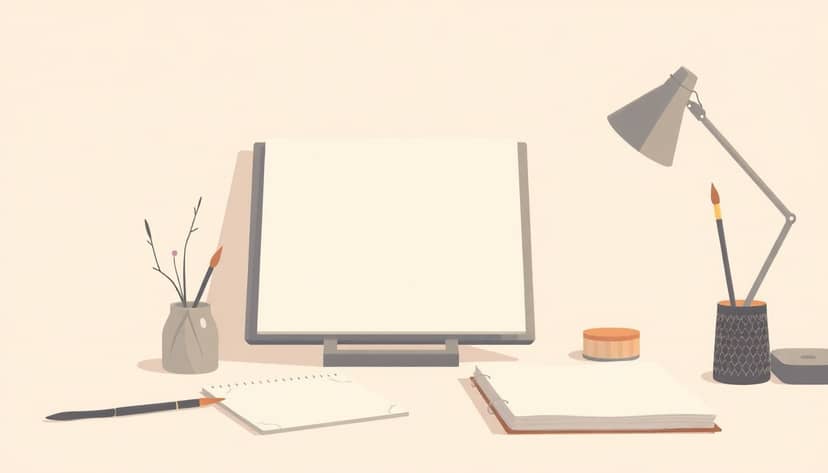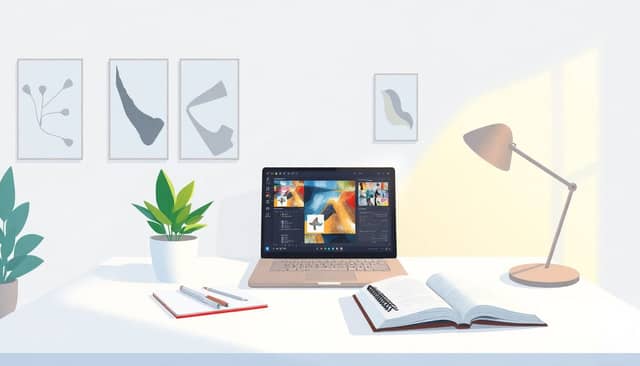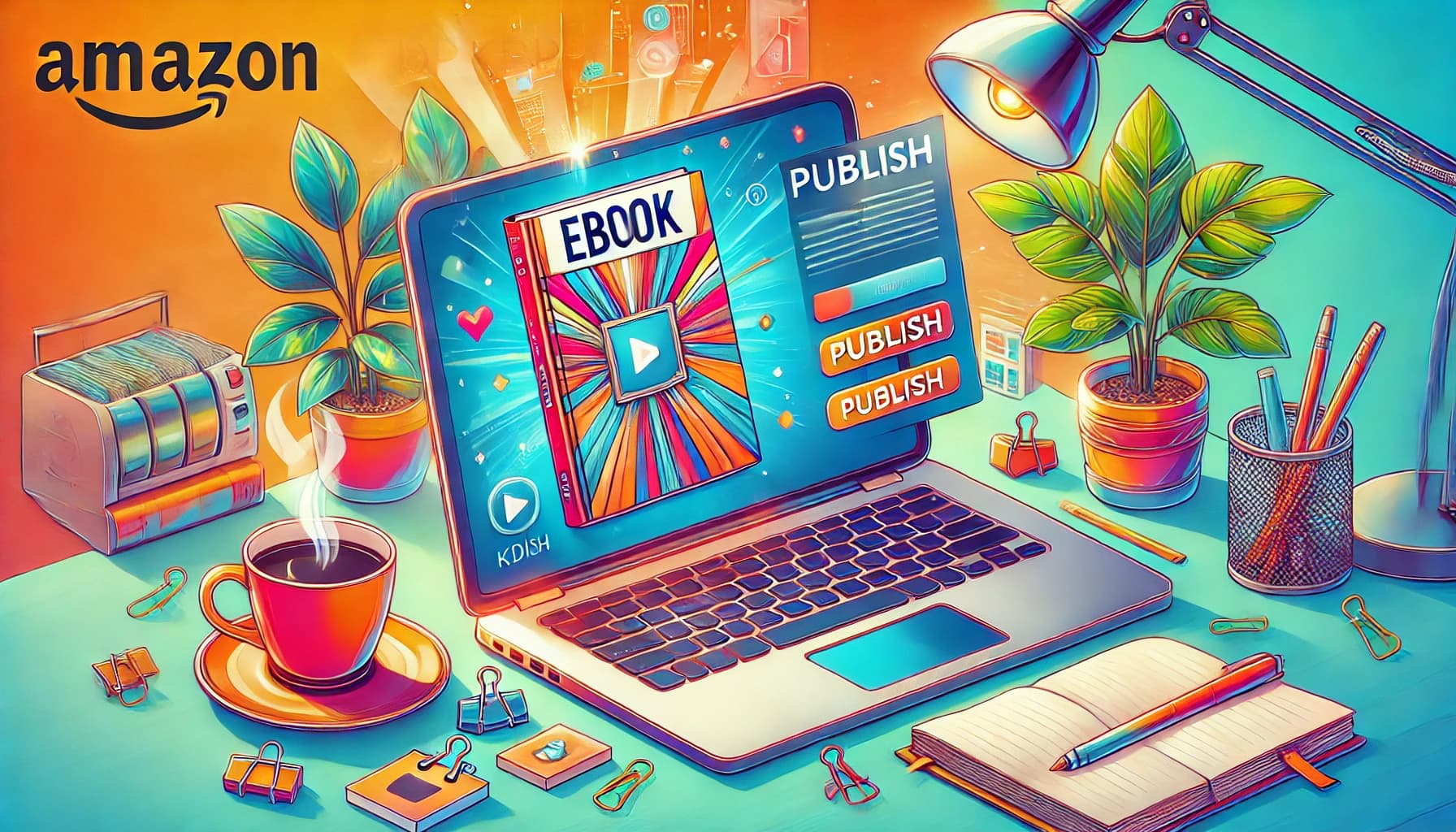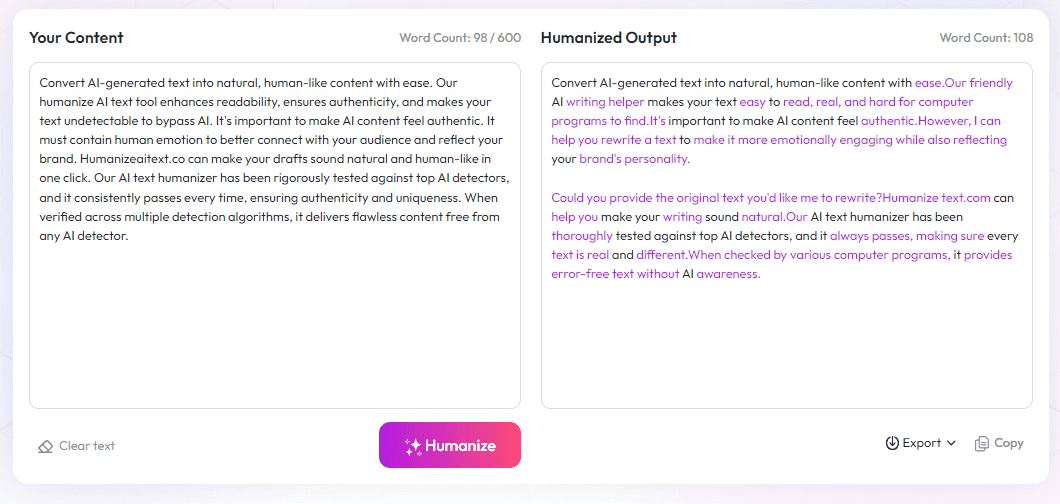Table of Contents
Looking for ways to grow as an artist without the traditional MFA route? Many creatives wonder if there are smarter or more flexible options out there. If that sounds like you, keep reading—there are plenty of alternatives worth considering.
By sticking around, you’ll discover choices like low-residency programs, community-based schools, residencies, and skill-specific training that might suit your lifestyle better. These options can help you build your skills and network without the long-term commitment of a typical MFA.
Here’s a quick preview: we'll go over some top alternatives for 2025, so you can find the one that fits your goals and schedule perfectly.
Key Takeaways
Key Takeaways
- There are affordable, flexible options to grow as an artist without doing a traditional MFA, such as low-residency programs, community classes, residencies, and niche online courses.
- Low-residency programs offer remote learning with occasional campus visits, giving you mentorship and networking without quitting your job or relocating.
- Artist-run schools, workshops, and residencies provide practical training, exposure, and the chance to build a strong portfolio in real-world settings.
- Online platforms like Skillshare and CreativeLive deliver focused, project-based courses for specific skills like digital art, animation, or photography.
- Connecting with mentors, participating in art competitions, and sharing your work online help you improve and gain recognition without formal degrees.
- Building a solid portfolio, staying current on trends, and networking with other artists online open doors for freelance work, collaborations, and growth opportunities.
- Self-publishing, online presence, and engaging with community critique groups are effective ways to showcase your work and develop your skills independently.

Looking for options beyond a traditional MFA in 2025? You're in luck. The art world is buzzing with innovative pathways that can help you develop your craft without the hefty price tag or lengthy commitment of a conventional degree.
**1. Low-Residency MFA Programs**
These programs let you study remotely while visiting campus only a few times a year. They’re perfect if you want the prestige of an MFA but need flexibility. Schools like the University of California, Los Angeles (UCLA) and the New York Academy of Art offer structured courses that fit into busy schedules. You get mentorship, critique sessions, and a network of artists without relocating or quitting your day job.
**2. Artist-Run Schools and Community Programs**
Many artists’ collectives and local arts organizations now run workshops and diploma programs. These are often more affordable and tailor-made to current art trends. Living in a community with a vibrant art scene can connect you with mentors and peers who genuinely understand your vision. Look for programs by artist-run spaces in your city or online platforms that offer mentorship, portfolio reviews, and skill-building courses.
**3. Artist Residencies and Workshops**
Residencies offer immersive experiences where artists work in inspiring environments, often with fellow creatives. Many residencies like the Brooklyn Arts Exchange (BAX) or the International Studio & Curatorial Program (ISCP) include workshops, critiques, and exhibitions. They’re a fantastic way to grow your skills, gain exposure, and build your portfolio—all without the formalities of a degree.
**4. Specialized Training in Fields Like Animation or Other Fields**
Thinking of branching into animation, game design, or digital art? Various online platforms offer focused courses that can be more effective than traditional programs. Websites like skill-specific platforms provide intensive training that helps develop niche skills quickly. These options often cost less and let you learn at your own pace.
Market data shows the MFA market was valued at around USD 21.11 billion in 2025, with growing interest in alternative education routes. Nearly 60% of artists adopt MFA alternatives to save costs and customize their learning experience. With the MFA industry expanding, it’s clear that non-traditional paths are becoming mainstream.

5. Online Platforms and Courses for Niche Skills
Learning specific skills like digital art, photography, or mixed media online can be a smart move if you want to focus narrowly.
Platforms such as CreativeLive and Skillshare offer courses taught by industry professionals.
These sites often have courses as short as a few hours, making it easy to fit learning into a busy schedule.
Look for programs that offer project-based assignments, so you can build real work to add to your portfolio.
Whether you’re into digital painting, concept art, or video editing, there’s likely a course tailored to your needs.
6. Mentorship and Peer Review Networks
Finding a mentor or peer review group doesn’t require a formal school.
Many online communities like DeviantArt or ConceptArt.org connect artists for feedback and guidance.
Joining local artist groups or social media groups can also help you get critiques and advice from experienced creatives.
Authentic feedback can be more helpful than grade-based assessments because it’s practical and tailored to your style.
Consider signing up for critique sessions on sites like ArtStation to sharpen your skills.
7. Self-Publishing and Building a Personal Brand
Creating your own work and sharing it online is a viable path that bypasses the need for an MFA.
Platforms like Amazon KDP, Blurb, or Lulu let you self-publish books, comics, or art catalogs without traditional gatekeepers.
Building an online portfolio on your own website or social media helps you attract an audience and potential clients.
Focus on creating a consistent style and publishing content regularly — think of it as a digital resume that works for you 24/7.
Additionally, engaging with your audience through blogs, live streams, or online mini-classes can help you grow your reputation as an artist.
8. Participating in Art Competitions and Exhibitions
Getting your work out there can sometimes be as effective as formal education.
Look for local and international competitions, many of which are open to artists without degrees.
Winning or even participating can give your portfolio credibility and open up networking opportunities.
Virtual exhibitions and online galleries are increasingly common, making exposure accessible without travel or large costs.
Check platforms like ArtSteps for virtual exhibitions or explore social channels for featured opportunities.
9. Developing a Portfolio That Stands Out
Your portfolio is your best tool when pursuing freelance work or alternative education paths.
Focus on quality over quantity: present your best, most diverse pieces.
Showcase projects that tell a story, demonstrate your skills in different mediums, and highlight your unique style.
Regularly update your portfolio on platforms like Behance or your own website.
Adding annotations or process shots can help viewers understand your workflow and thinking process.
10. Staying Current With Art Trends and Industry News
Keeping up with trends is vital if you want your work to remain relevant.
Follow industry blogs, social media accounts, and newsletters from major art platforms and organizations.
Joining online forums and attending virtual conferences can provide insights into what’s trending across different art fields.
Use trend reports, like those from Art Business, to see growth areas like NFT art or digital installations.
Test new styles or techniques inspired by current trends, but remember to add your own twist to stay authentic.
11. Building a Network for Opportunities and Growth
Networking isn’t about shaking hands at gallery openings — it’s about connecting with others who can inspire or help your career.
Engage with artists and industry professionals via social media, online communities, and virtual events.
Attend webinars, artist talks, or local meetups that are now often hosted online.
Share your work honestly and invite feedback — people tend to respond well to authenticity.
Building genuine relationships can lead to collaborations, commissions, or mentorship, which are often more valuable than formal education.
FAQs
Low-residency MFA programs allow artists to study remotely while maintaining their existing commitments. They offer flexibility and access to quality mentorship, making it easier to earn a degree without relocating or leaving work behind.
Artist-run schools and community programs are independent initiatives led by artists. They focus on hands-on learning, collaboration, and local engagement, often offering affordable or free art education outside traditional academic settings.
Artist residencies provide focused time and space for creative work, often in unique locations. Unlike MFA programs, residencies usually don't offer academic credits but promote networking, skill growth, and new project development in a supportive environment.
Yes, artists can pursue training in areas like animation, digital media, or illustration through workshops, online courses, or certificate programs. These options often provide practical skills without the commitment of a full degree.



